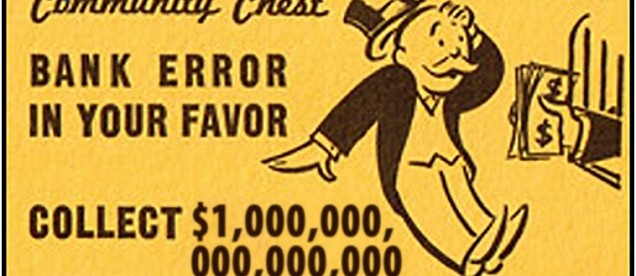Desolcerof

In September of 2009, Warren and Maureen Nyerges bought a home in Naples, Florida. Despite the fact that the housing market had crumbled a year earlier, they’d be in court less than a year later, trying to stop the bank from taking their house. And in June of 2011, the sheriff and moving trucks appeared, ready to foreclose unless all debts were paid.
Change the names and dates and the story above is a sad but common one. But in this case, there was a twist. The moving trucks didn’t go to the Nyergeses house. They went to the bank — because in the case of this mortgage-related foreclosure, the bank was the one in default.
Let’s go back to the home purchase in 2009. The Nyergeses’ new home cost them $165,000, which they probably could have financed, but they didn’t have to. Instead, they opted to pay for the home in full. Nevertheless, in February of 2010, the couple found themselves on the wrong side of a foreclosure action brought by Bank of America. Bank of America claimed that the property the Nyergeses now owned had a mortgage on it, and it had gone unpaid for some time. (It may have, but if it did, the mortgage wasn’t taken out by Mr. and Mrs. Nyerges, and the couple wasn’t responsible for it.) As a result, Bank of America argued, the bank was entitled to the house.
After a lot of back and forth with the bank and a few conversations in front of a judge, the Nygereses successfully argued that whatever Bank of America was entitled to, it wasn’t entitled to it from them. In March of 2010, Bank of America dropped the foreclosure action. But defending themselves from the errant bank notice wasn’t free or, for that matter, cheap. The Nygereses forked over more than $2,500 in legal fees and other expenses defending themselves against Bank of America’s mistake, and they wanted to be made whole. So they sued — and won. By January of 2011, Mr. and Mrs. Nygeres were the proud owners of a judgment against the bank which had sought to take their home from them.
But as winter gave way to spring and spring transitioned into summer, the Nygereres found that their cash purchase of the house wasn’t the only thing Bank of America ignored — the bank simply failed to pay the judgment. Whether this was out of malice or plain incompetence is left up to the reader to decide (it’s probably the latter, though), but in any event, as of June 1, 2011, Bank of America hadn’t yet paid the Nygereres. So their attorney, named Todd Allen, decided to foreclose on the bank.
Allen, judgment in hand, went to the court to seek an order of foreclosure, which was granted. He then went to the local sheriff’s office and, partnering with a local moving company named William Chuff, put that order into action. The attorney, sheriff, and movers showed up at a Naples branch of Bank of America with a clear message — pay the Mr. and Mrs. Nygeres what you owe them, now, or we’ll start taking your stuff. Everything was fair game, as TIME reported; Allen instructed the sheriff to seize “cash from the tellers’ drawers, furniture, computers and other property” in order to make good on the bank’s debt to the homeowner.
That didn’t actually come to pass, though, as the bank quickly capitulated. About an hour later, the bank manager got the go-ahead to cut a check for $5,772.88, to cover Allen’s fees and the other costs incurred by the Nygereses — with their apologies for the delay. (The bank blamed their outside attorney whom, they noted, “is no longer in business.”)
Bonus fact: In 2010, an Ohio man named Terry Hoskins lost his home due to a conflict with the bank in what one hopes was resolved in a unique way. Hoskins had used the equity in his house to secure a business loan (which can often be a bad idea) and, when he failed to repay the loan, the bank executed its lien on his house. Upset that the value of the house ($350,000) was more than the money owed on the loan ($160,000), Hoskins decided that if he couldn’t keep the house, the bank wasn’t going to get it either. As Cincinnati’s NBC affiliate WLWT reported, Hoskins decided to bulldoze his home, leaving the bank a snow-covered pile of rubble.
From the Archives: Mister Plow: Another man with a bulldozer — or, rather, a “Killdozer.”
Take the Quiz: Name the 10 Largest U.S. Banks (as of 2012). This is a bit tricky as #6 is no longer in the banking business.
Related: “The Big Short” by Michael Lewis. A non-fiction book about the events leading up to the 2008 economic collapse — and about a lot of mortgages which resulted in foreclosures. It has also been made into a movie, of course, but I haven’t seen it. I have read the book and greatly enjoyed it.
